The Philippines is an archipelago in Southeast Asia. This country is rich in natural beauty as well as history, not to mention the best island resorts and wellness retreats that attract tourists from anywhere. Among the country’s pride are the beautiful buildings that can be found in Manila, the capital city of the country. Having been ruled by several foreign powers before it gained independence, these rulers have influenced not only the Filipinos’ way of life but also the architectural designs of the structures built during each era. Some of these buildings have become iconic and they have attracted many visitors especially those who are interested in architectural designs. Here is a list of the best famous buildings in the Philippines that are worth a visit.
1. Manila Cathedral (The Minor Basilica and Metropolitan Cathedral of the Immaculate Conception)

The Minor Basilica and Metropolitan Cathedral of the Immaculate Conception, or Manila Cathedral, is one of the most prominent churches in the Philippines. In 1851, it became a cathedral - the first one in the country. The original church was made in bamboo and nipa. However, a fire destroyed it and a stone church was built on the site. Every time the structure was destroyed by natural calamities, a new one was built on the original site, with each structure built in the current architectural style. It was renovated several times until it attained its present grandeur. Today, visitors come to see this historic and magnificent structure that stood witness to the steadfast faith of the Filipinos and the evolution of architecture in the country.
Manila Cathedral
Address: Beaterio St, Cabildo St, Intramuros, Manila, 1002 Metro Manila
Website: Manila Cathedral
2. National Museum of the Philippines
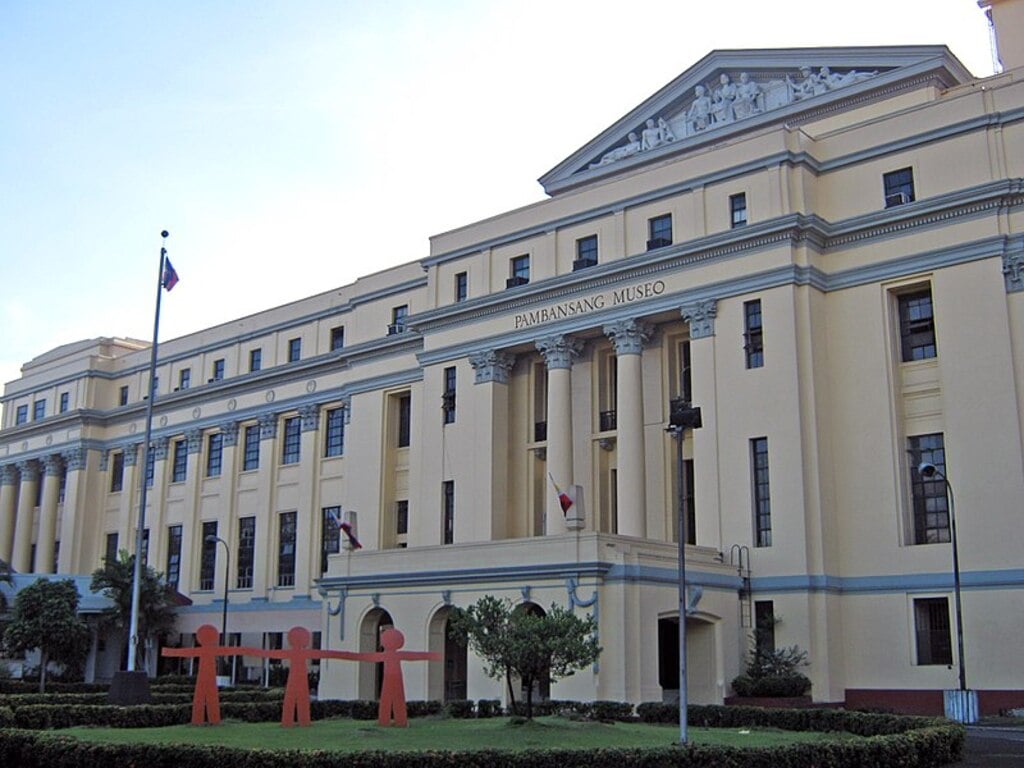
If you’re looking for some interesting things to do, try to visit the National Museum of the Philippines, one of the best attractions in Manila. Located at the heart of Manila, the nation’s capital, it spans Padre Burgos Avenue, Rizal Park. The complex is composed of the National Art Gallery, now known as the National Museum of Fine Arts, housed in the Old Legislative Building; Museum of the Filipino people, which used to be the Finance Building; and the National Museum of Natural History, which is located in the Old Tourism Building. Construction of the National Museum of Fine Arts started in 1901 and finished in 1928. It was designed by Ralph Harrington Doane, an American Architect, and his assistant, Antonio Toledo. Featuring a Neo-classical architectural design and Greek Corinthian columns, the building is considered an architectural wonder.
The Museum of the Philippines
Address: Padre Burgos Ave, Ermita, Manila, 1000 Metro Manila
Website: National Museum of the Philippines
Opening hours: Tue - Sun: 10am - 5pm (closed on Mon)
3. San Agustin Church
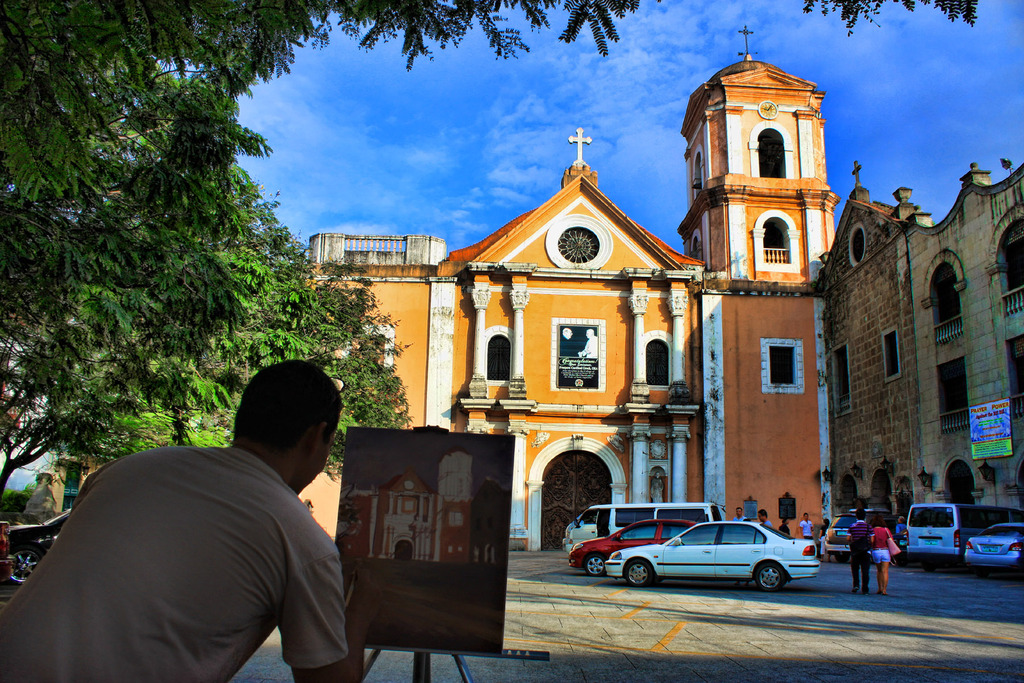
San Agustin Church is the oldest church in the Philippines. It was built between 1587 and 1606 in Baroque and Spanish Colonial architecture. During World War II, it was the only building spared from destruction in Intramuros. It has weathered several earthquakes and other natural calamities. The facade is massive, and when you step inside, your eyes are met by the grandeur of the elaborate interior. The vaulted ceiling displays intricate and colorful frescoes. Glass chandeliers hang over the nave. These 19th-century fixtures were purchased from Paris.
San Agustin Church
Address: General Luna St, Manila, 1002 Metro Manila
Website: San Agustin Church
Opening hours: 8am - 12pm, 1 - 6pm (daily)
You might be interested in these Airbnbs!
4. Zuellig Building
Editor's Note: There's no photo available at the time of writing
Zuellig Building in Makati is a skyscraper that offers office spaces. At 33 levels, one can enjoy a fascinating view of Manila and a lot more. The structure has sustainable features that allow the efficient use of water and energy and improves the quality of air inside the building. Amenities include a food plaza, a sky garden, and a restaurant. Zuellig Building looks imposing as it seems to reach up to the sky.
Zuellig Building
Address: Makati Avenue corner Paseo de Roxas, Makati, 1225 Metro Manila
Website: Zuellig Building
Opening hours: 24 hours (daily)
5. Cultural Center of the Philippines
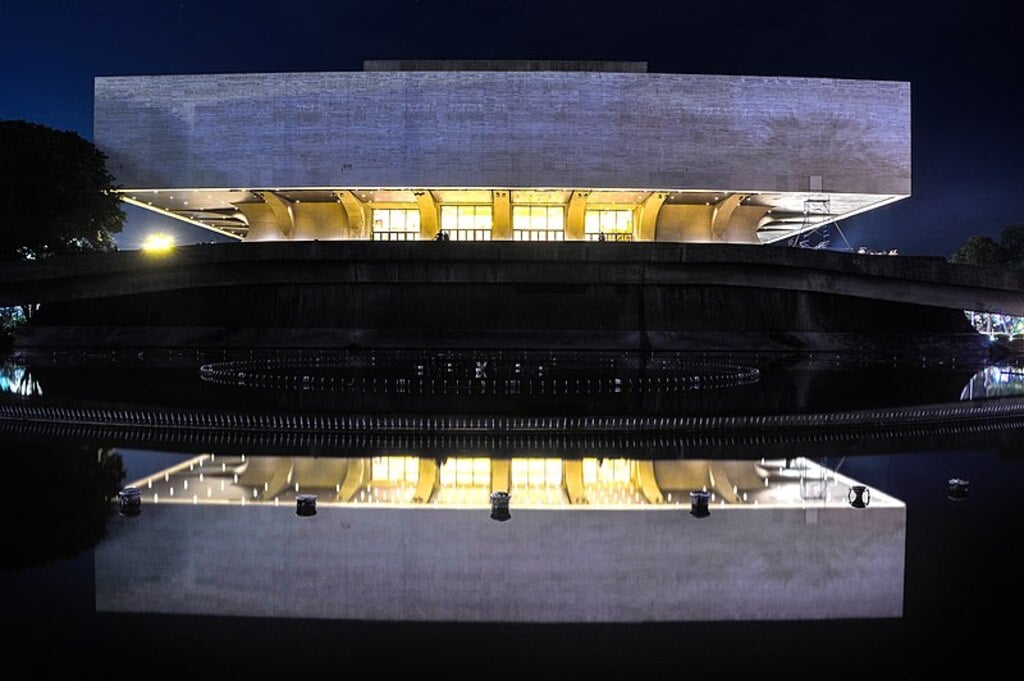
The Cultural Center of the Philippines is another impressive building in Manila that is highly popular. It is admired by art enthusiasts that come to the center to see live artistic performances. Designed by Leandro Locsin whose works are known to appear like floating masses, the Cultural Center of the Philippines has a capacity of 8,458 divided into 10 sections, Established in 1966, the CCP has been tasked to oversee the development, promotion, and preservation of the arts and culture of the Philippines. The building has been the venue of several national and international events relevant to the culture and arts.
Cultural Center of the Philippines
Address: Roxas Boulevard, Malate, Pasay City, 1307 Metro Manila.
Website: Cultural Center of the Philippines
6. Parish of the Holy Sacrifice
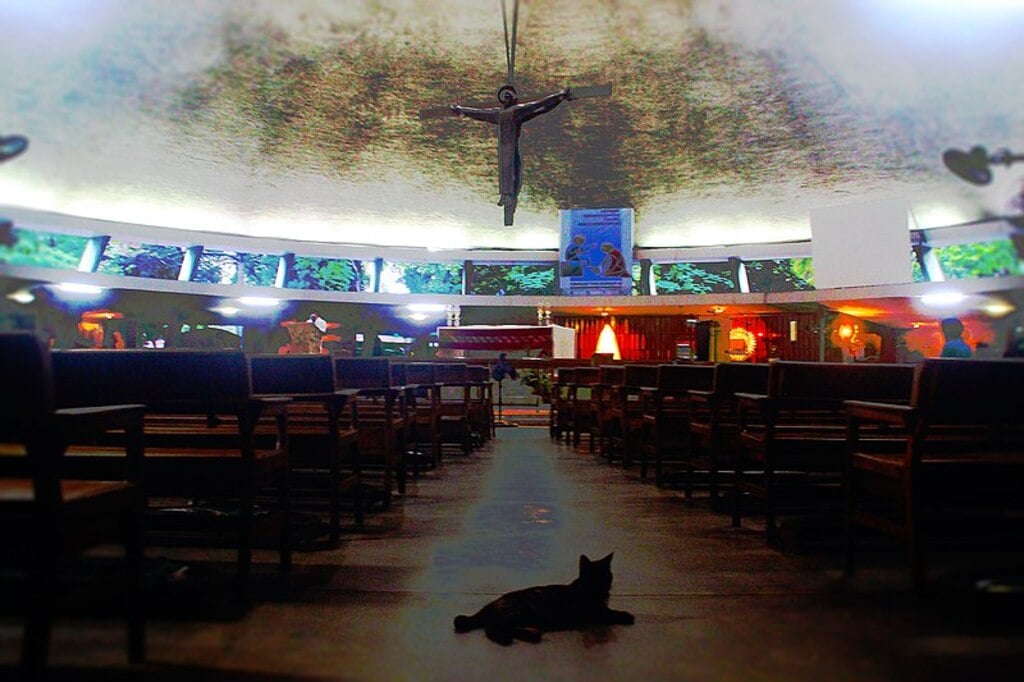
The Parish of the Holy Sacrifice was another project of the famous Filipino architect Leandro Locsin. This was the first church in the country to have a circular shape and a dome that was designed with a thin shell. It serves the faithful of the UP Diliman Campus and the parishioners of Cubao, Quezon City. The circular design gives a sense of active participation of the congregation during the masses and other church events. The altar is found in the middle and the circular wall features 15 murals that illustrate the Stations of the Cross. The 15th mural depicting Christ’s Ressurection adorns the sacristy wall.
Parish of the Holy Sacrifice
Address: Parish Office, Apacible St, Diliman, Quezon City, 1101 Metro Manila
Website: Parish of the Holy Sacrifice
7. Philippine Arena
Editor's Note: There's no photo available at the time of writing
The Philippine Arena has been named the world’s biggest indoor arena. It is a multipurpose structure with a capacity of 55,000 people. Designed using the modernist style, the building was inspired by the country’s national tree, the narra tree, as well as the roots of the banyan tree, and the nipa hut. Located in Ciudad de Victoria, an enterprise zone in Bocaue, Bulacan, it has served as the venue for basketball, boxing, tennis, football, music performances, concerts, and even cockfighting. It was featured on the Discovery Channel as among the structures in the Philippines that can withstand typhoons and earthquakes.
Philippine Arena
Address: Ciudad de Victoria, Santa Maria, Bulacan
Website: Philippine Arena
8. Malacañang Palace

Malacañang Palace is the official residence of the president of the Philippines. It was originally built as a summerhouse of a Spanish nobleman in 1750. Its name was derived from the words “May Lakan Dyan”, which, in English, means, “there lives a nobleman here”. The Spanish government purchased it in 1825 to be used as the official home of the governor-general. Throughout the years, major renovations have been made. In 1979, renowned interior decorators were hired to give the palace a makeover. Today, it has several halls and within the premises were several buildings. The palace has a vast garden and park that is now called the freedom park.
Malacañang Palace
Address: Malacañan Palace, JP, Kalayaan Hall, 2/F Jose Laurel St, San Miguel, Manila, Metro Manila
Website: Malacañang Palace
Opening hours: Mon - Fri: 8am - 5pm (closed on Sat & Sun)
9. Manila Hotel (from USD 142)
Reasonably priced with discounts at breakfast buffet
Historical and cultural vibe, spacious rooms, beautiful lobby, pool, and gym
Excellent location for visiting Intramuros and nearby attractions, walking distance to Rizal Park
Delicious breakfast buffet with extensive choices, superb Filipino dishes, and healthy options
Manila features plenty of old and famous hotels, The Manila Hotel being the oldest leading hotel in the Philippines. This hotel was inaugurated in 1912, making it more than a century old already. It stands near South Harbor and Rizal Park, also known as Luneta Park. The rooms in the upper levels command an unobstructed view of the surrounding areas, including the historic Intramuros. Considered as the address of prestige in the Far East, dignitaries and celebrities from all over the world make it their temporary home while in the Philippines. Designed and renovated by famous architects, the hotel has lovely rooms designed for luxurious living.
The Manila Hotel
Address: One Rizal Park
530 meters (0.4 ft) from Rizal Park
10. Grand Hyatt Manila (from USD 284)
Reasonable pricing for spacious rooms and excellent facilities.
Superb facilities, including a separate pool for kids and a luxurious spa.
Conveniently located in the heart of BGC, steps away from Uptown Mall and dining options.
Delicious and diverse dining options, with exceptional breakfast selections.
Eco-hotels and resorts are abundant in Manila, but if you’re looking for an accommodation that is both luxurious and famous, then consider staying in Grand Hyatt Manila. This hotel boasts an architectural design that is similar to the Empire State Building in Manhattan. Located in Grand Central Park, the hotel offers an unobstructed view of the surrounding areas and the skyline of Manila. There is ample parking space in the basement and valet parking services are also available. With spacious rooms, luxurious beddings, and spotlessly clean bathrooms, staying in Grand Hyatt Manila spells comfort and opulence. Take a swim in the spacious swimming pool, work out in the fitness center, or get pampered at the spa. Enjoy gourmet food, excellent drinks, and a fantastic view at the roof deck restaurant of the hotel.
Grand Hyatt Manila
Address: 8th Avenue corner 35th Street, Bonifacio Global City
8.4 km (5.3 mi) from Rizal Park
See the grandeur of the best famous buildings in the Philippines
With its history and diverse culture, the country takes pride in its magnificent buildings that feature different architectural designs. People visiting Manila can not experience only the best theme parks and other attractions, but they can also take pleasure in viewing the best famous buildings in the Philippines - some of which were designed during the Spanish Era while others show modern styles. We hope our list helped add more interesting things to your Philippines travel bucket list!
History
Get Trip101 in your inbox
Unsubscribe in one click. See our Privacy Policy for more information on how we use your data











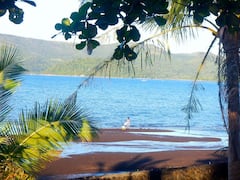

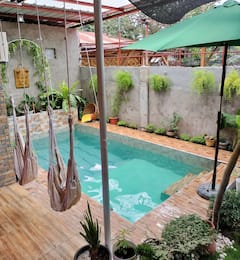
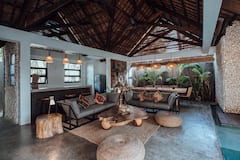
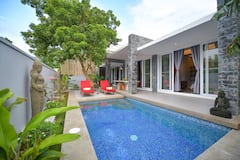




















Create an account to